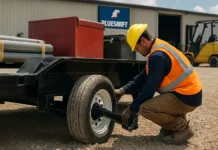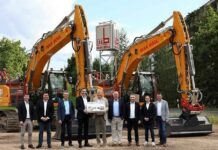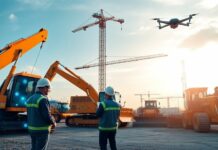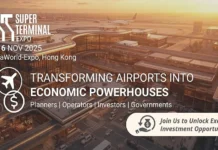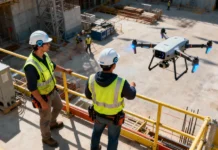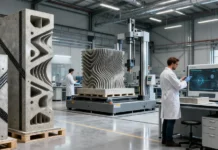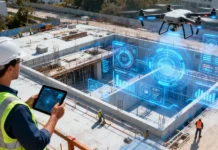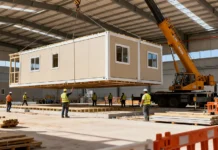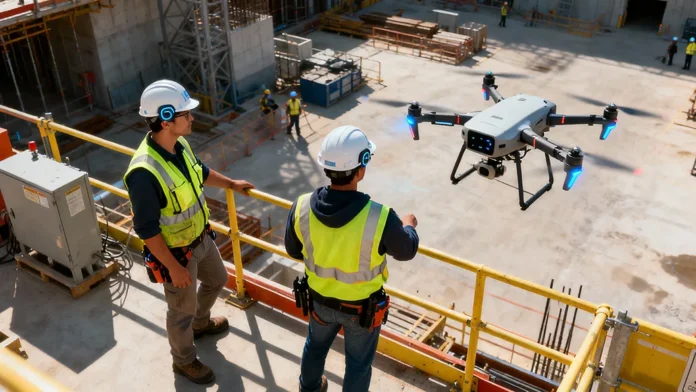Construction remains among the most hazardous occupations globally. Falls from heights, equipment-related injuries, electrical hazards, environmental exposures, and structural failures create constant danger. The World Health Organization estimates that occupational accidents and diseases claim approximately 2.3 million lives annually, with construction workers bearing disproportionate risk. Yet beneath these sobering statistics lies an encouraging reality: many construction accidents prove preventable through systematic hazard identification, robust control implementation, and continuous performance monitoring.
The modern construction industry is undergoing a fundamental transformation in how construction safety and resilience approach these challenges. Rather than reactive incident response focusing on investigation after accidents occur, forward-thinking organizations implement proactive safety frameworks identifying hazards before incidents materialize. Rather than viewing safety as a compliance obligation, leading organizations embrace construction safety as fundamental to operational excellence, recognizing that safer projects inevitably prove more efficient, cost-effective, and productive.
Safety innovation increasingly incorporates advanced technologies including artificial intelligence, drones, wearable sensors, and real-time monitoring systems that transform safety management from periodic inspections to continuous observation. Resilient infrastructure design approaches anticipate future challenges—climate change, natural disasters, pandemics, economic disruptions—building adaptability into infrastructure that must function reliably across decades of uncertain conditions. This integration of proactive safety management with resilience engineering positions organizations to deliver infrastructure proving safe, efficient, and enduring.
The Evolution of Construction Safety Philosophy
Construction safety philosophy has evolved through distinct eras, each reflecting contemporary understanding and technological capabilities.
Early Era: Prescriptive Compliance
Traditional construction safety frameworks emphasized compliance with prescriptive standards specifying required protective equipment, guardrail dimensions, and procedural requirements. While these standards provided baseline protection, they often proved reactive—standards emerged following tragic incidents demonstrated specific hazards requiring protection.
Prescriptive approaches offer the advantage of clear, objective compliance criteria. Organizations readily verify compliance through inspections confirming that guardrails meet specified dimensions, fall protection systems possess correct specifications, and workers wear mandated equipment. However, prescriptive requirements cannot anticipate every possible hazard. Innovations creating novel hazards often proceed without corresponding protective standards until incidents demonstrate the need.
Transition Era: Risk-Based Management
Contemporary construction safety emphasizes risk-based approaches systematically identifying hazards, analyzing their likelihood and consequence, and implementing proportionate control measures. Rather than simply complying with prescriptive requirements, organizations conduct comprehensive risk assessments identifying project-specific hazards requiring customized solutions.
Risk-based construction safety and risk management frameworks employ systematic processes including hazard identification through task analysis, likelihood and consequence estimation, and control prioritization according to risk magnitude. A task presenting extremely high consequence risk justifies substantial control investment even if probability remains modest. Conversely, high-probability hazards with modest consequences warrant proportionate but less intensive controls.
This approach enables sophisticated resource allocation focusing investment on the most consequential risks rather than uniform protection against all identified hazards. However, risk-based management remains dependent on human judgment and expert assessment—processes subject to cognitive biases and potentially inadequate hazard identification.
Contemporary Era: Proactive Data-Driven Safety
Emerging construction safety frameworks leverage advanced technology to transition from expert judgment toward data-driven continuous monitoring. Sensors deployed throughout construction sites generate continuous streams of data regarding worker location, equipment operation, environmental conditions, and activity patterns. Artificial intelligence algorithms analyze these data streams identifying patterns suggesting elevated risk.
Rather than periodic safety audits discovering problems that may have already caused harm, digital safety systems continuously analyze conditions. When patterns match historical indicators preceding injuries, the system alerts safety personnel enabling intervention before incidents occur. When worker behavior violates established safety protocols, alerts enable immediate correction. When environmental conditions suggest hazard emergence, warnings enable proactive response.
This progression from prescriptive toward data-driven construction safety represents a fundamental shift from reactive incident management toward predictive hazard prevention. Rather than discovering that workers lack adequate fall protection after falls occur, systems now identify workers approaching unprotected edges before they fall, enabling intervention preventing incidents.
Technology Integration in Safety Management
Modern safety innovation increasingly incorporates diverse technologies transforming safety management capabilities.
Drone-Based Site Monitoring
Drones equipped with high-resolution cameras provide comprehensive aerial documentation of construction sites without requiring humans to access potentially hazardous locations. Safety inspectors identify unsafe conditions, improper equipment positioning, and hazardous behaviors without physically climbing structures or traversing congested jobsites.
Drone-based monitoring reduces safety inspector exposure to the very hazards they assess. Rather than safety professionals conducting inspections from within construction sites where they encounter the same risks as regular workers, inspectors operate drones from safe locations. Drones can access difficult-to-reach locations—roof edges, elevated structures, confined spaces—providing visual documentation impossible through traditional inspections.
Research indicates that drone-based construction site monitoring reduces inspection costs approximately 10 percent while improving coverage completeness compared to traditional inspection approaches. Real-time video feeds enable remote stakeholders to observe site conditions, verify safety compliance, and identify emerging hazards continuously rather than at scheduled intervals.
Wearable Technology for Worker Monitoring
Wearable devices including smart helmets, instrumented vests, and connected watches continuously monitor worker status and environmental conditions. These wearables detect vital signs suggesting worker stress or fatigue, locate workers in three-dimensional space enabling proximity warnings to hazards, and monitor exposure to environmental hazards such as extreme temperatures or hazardous chemicals.
When wearables detect concerning conditions, alerts notify workers and supervisors enabling intervention. A worker experiencing elevated heart rate and body temperature in extreme heat receives alerts enabling removal to cooler environments preventing heat-related illness. A worker wandering into restricted hazard zones receives proximity warnings. Workers separated from their teams trigger alerts enabling rapid response. If workers fall or suffer accidents, wearables transmit emergency alerts to response teams enabling rapid assistance.
Integration of wearable technology with construction safety management systems creates continuous worker monitoring impossible through traditional periodic inspections. Rather than discovering injuries after workers sustain them, systems now identify stress indicators suggesting potential harm and enable preventive intervention.
Internet of Things Sensors for Environmental Monitoring
IoT sensors deployed throughout construction sites continuously monitor environmental parameters including temperature, humidity, noise levels, air quality, and vibration. These sensors detect conditions potentially creating hazards—elevated noise levels suggesting inadequate hearing protection requirements, poor air quality indicating ventilation problems, temperature extremes creating heat or cold stress hazards.
When environmental parameters exceed safe thresholds, monitoring systems alert safety personnel and potentially trigger automated responses. Ventilation systems activate when air quality degrades. Cooling fans operate when heat stress conditions develop. Work activities pause when environmental hazards become uncontrollable. This continuous monitoring and automated response capability transforms environmental safety management from periodic testing to continuous assurance.
Artificial Intelligence and Predictive Analytics
Artificial intelligence algorithms trained on historical safety data develop capability to identify patterns preceding injuries. By analyzing incident reports, near-miss documentation, worker behavior observations, and environmental conditions, machine learning models identify indicators suggesting elevated risk.
When current conditions match historical patterns preceding injuries, AI systems alert safety personnel. A project experiencing high overtime hours, multiple equipment malfunctions, and elevated worker fatigue—patterns often preceding injuries—receives alerts enabling preventive intervention. Workers displaying behavior patterns historically associated with incidents receive targeted safety interventions. Resource allocation concentrates on identified high-risk situations rather than distributing uniformly.
This AI in construction safety application represents a fundamental shift from reactive incident response toward predictive hazard prevention. Rather than investigating incidents after they occur, systems now predict incidents before occurrence and enable prevention.
Building Information Modeling for Safety Planning
Building Information Modeling (BIM) systems capturing complete project specifications enable safety planning integrated from earliest design phases. Rather than safety considerations arriving as afterthoughts during construction planning, design reviews can identify inherent hazards and enable design modifications eliminating or minimizing hazards.
A BIM model can identify temporary support requirements for concrete placement, enabling structural engineers to design adequate temporary bracing at early design phases. Space constraints potentially creating worker injury risks become apparent during design rather than discovered when construction reveals problems. Access constraints for maintenance activities can be resolved during design rather than compromising maintenance safety decades after construction completion.
By integrating construction safety and resilience considerations into design processes through BIM analysis, inherent hazards can be addressed through design innovation rather than dependent upon worker adaptation to inherently hazardous conditions.
Resilient Infrastructure Design Framework
Beyond conventional safety addressing immediate injury prevention, contemporary resilient infrastructure design anticipates future challenges infrastructure must withstand.
Multi-Hazard Risk Assessment
Resilient infrastructure design begins with comprehensive risk assessment identifying diverse hazards infrastructure might encounter. This extends far beyond conventional design loads. Buildings must withstand earthquakes, hurricanes, floods, extreme temperatures, snow loads, and combinations thereof. Infrastructure must maintain functionality during adverse conditions—power systems remaining operational during storms, water systems providing service during emergencies, communication infrastructure persisting despite disruptions.
Climate change introduces evolving hazard profiles. Historical design standards based on historical weather patterns and earthquake frequencies become inadequate as climate changes shift environmental extremes. Resilient infrastructure design explicitly accounts for climate evolution, designing infrastructure capable of adapting to environmental conditions potentially differing significantly from historical norms.
Redundancy and System Diversity
Critical infrastructure functions require protection through redundancy ensuring continued operation despite component failures. A single point-of-failure in a critical system creates unacceptable risk. Resilient infrastructure design incorporates redundant systems so that backup systems provide continued functionality when primary systems fail.
Power grids with multiple generation sources and transmission paths continue operating despite individual component failures. Water systems with redundant supply sources maintain service despite pipeline damage. Communication networks with mesh topologies route around failed nodes maintaining connectivity. These redundant architectures require greater initial investment but prove cost-effective when considering that single-point failures in critical systems can generate catastrophic consequences.
Flexibility and Adaptability
Future conditions often differ from current anticipations. Resilient infrastructure design incorporates flexibility enabling adaptation to changing conditions. Buildings designed with modular systems can reconfigure for alternative uses. Transportation networks with redundant routing options accommodate traffic pattern changes. Utilities with flexible configuration capabilities adapt to changing demand patterns.
This flexibility requirement influences infrastructure design, construction methodologies, and operational strategies. Rather than optimizing infrastructure for specific anticipated uses, resilient infrastructure design introduces flexibility enabling future adaptation even when specific adaptations cannot be anticipated.
Integrated Stakeholder Collaboration
Infrastructure resilience depends on coordination among diverse stakeholders—government agencies, utility operators, emergency responders, community organizations, and private sector entities. Single-sector optimization frequently compromises multi-sector resilience. Water system investments must coordinate with stormwater management, energy system design must accommodate electrification trends, communication infrastructure must integrate with transportation systems.
Resilient infrastructure development requires governance structures enabling meaningful stakeholder collaboration throughout planning, design, construction, and operation phases. Rather than independent decision-making by individual sectors, coordinated approaches optimize collective resilience outcomes.
Risk Management Systems and Safety Culture Development
Beyond technological solutions, organizational safety culture fundamentally influences construction safety and resilience outcomes.
Comprehensive Safety Management Systems
Leading organizations implement formal Safety Management Systems (SMS) providing structured frameworks for identifying hazards, analyzing risks, implementing controls, and continuously improving safety performance. These systems typically incorporate four essential components:
Safety Policy clearly establishes organizational commitment to construction safety, assigns safety responsibilities, and establishes accountability mechanisms ensuring that safety objectives receive adequate resources and leadership attention.
Safety Risk Management systematically identifies project hazards, analyzes likelihood and consequence, establishes risk acceptance criteria, and implements prioritized controls addressing highest-risk conditions.
Safety Assurance continuously monitors safety performance through audits, incident investigations, employee reporting, and trend analysis. When controls prove inadequate, corrective and preventive actions implement improvements preventing recurrence.
Safety Culture Development fosters organizational values viewing safety not as compliance burden but as integral to operational excellence. When organizations embrace safety culture genuinely, workers willingly report hazards and near-misses enabling prevention rather than covering incidents to avoid perceived blame.
Incident Investigation and Learning
When incidents occur, systematic investigation identifies root causes extending beyond surface causes. Why did a fall occur? Inadequate guardrails represent obvious surface cause. But deeper investigation might reveal design inadequacy, inadequate training, time pressure driving shortcuts, or communication failures. Addressing root causes prevents recurrence more effectively than addressing only surface symptoms.
Effective incident investigation creates organizational learning opportunities rather than blame and punishment. When workers fear investigation consequences, they hide incidents preventing organizational learning. When investigation focuses on system improvement rather than individual blame, workers cooperate freely and organizations capture learning opportunities.
Preventive Safety Training and Continuous Improvement
Worker competence fundamentally influences safety outcomes. Inadequately trained workers lack awareness of hazards and appropriate protective measures. Continuous training addressing specific project hazards, emerging risks, and lessons from incidents maintains competence throughout employee tenure.
Mentorship programs pairing experienced workers with newer employees transfer safety knowledge directly. Safety committees including worker representatives provide forums for safety discussion and improvement suggestions. Recognition programs acknowledging safety achievements reinforce positive behaviors. These cultural elements combined with training create workforces prioritizing safety.
Real-World Applications: From Theory to Practice
Several organizations demonstrate that comprehensive construction safety and resilience frameworks deliver substantial benefits.
Large Infrastructure Project Case Study
The Channel Tunnel connecting England and France represents one of history’s most complex infrastructure projects. Construction occurred beneath the English Channel with extraordinary pressure and extraordinary complexity. The project implemented rigorous construction safety frameworks including:
Comprehensive hazard identification throughout design and planning phases enabling hazard elimination before construction. Worker training emphasizing specific project hazards and required protective measures. Continuous safety monitoring with immediate response to safety violations. Regular safety audits identifying emerging risks. Incident investigation focusing on prevention.
Despite construction complexity, the Channel Tunnel project achieved safety performance significantly exceeding industry norms. Projects can simultaneously achieve extraordinary complexity and exceptional safety through comprehensive commitment to construction safety and resilience principles.
Smart Building Implementation Case Study
Advanced construction facilities increasingly implement digital safety systems transforming safety management. A major EPC (Engineering, Procurement, Construction) contractor implemented cloud-based safety platforms incorporating:
Real-time IoT sensor data about site conditions, worker locations, equipment status, and environmental parameters. Machine learning algorithms analyzing data streams identifying patterns preceding incidents. Automated alerts when concerning conditions emerge. Video analysis detecting unsafe behaviors and providing real-time correction. Incident prediction enabling preventive intervention before problems occur.
Implementation of these safety innovation technologies enabled the contractor to reduce safety incidents 35 percent compared to projects using traditional management approaches while simultaneously improving schedule predictability and cost control. Safety, schedule, and cost improvements proved correlated rather than conflicting—safer projects proved more efficient across all performance dimensions.
Future Directions and Emerging Opportunities
Construction safety and resilience continue evolving through emerging technologies and evolving understanding.
Autonomous construction robots performing dangerous tasks represent emerging possibilities. These robots could operate in confined spaces, at extreme heights, or in hazardous chemical environments, eliminating human exposure to extreme risks. As automation costs decline and reliability improves, robots will likely assume increasingly dangerous tasks.
Augmented reality safety systems providing real-time hazard information overlaid on worker visual fields represent emerging capabilities. Workers see digital warnings identifying restricted areas, equipment hazard zones, and required protective measures displayed directly in their visual environment rather than accessible through separate documentation requiring conscious reference.
Blockchain-based safety records creating immutable documentation of safety training, inspections, and compliance provide transparent governance preventing fraudulent safety documentation. Claims regarding safety training completion or equipment inspections receive permanent verification through blockchain records.
Conclusion: Integration of Safety, Efficiency, and Resilience
Construction safety and resilience represent fundamental pillars of modern infrastructure development, not mere compliance obligations or additional costs reducing project efficiency. Evidence from diverse projects worldwide demonstrates that organizations prioritizing safety, implementing advanced technologies, and building resilient systems achieve superior performance across all dimensions—safety, schedule, cost, quality, and sustainability.
The convergence of safety innovation technologies including drones, wearables, IoT sensors, artificial intelligence, and BIM integration enables construction safety management transitioning from reactive incident response toward predictive hazard prevention. Organizations embracing these technologies systematically outperform competitors relying on traditional approaches.
Resilient infrastructure design anticipating future challenges and incorporating flexibility, redundancy, and adaptability creates infrastructure capable of providing reliable services despite disruptions. As climate changes and social conditions evolve, infrastructure resilience increasingly determines whether communities prosper or suffer.
For construction organizations, developers, and institutions committed to building excellence and operational reliability, construction safety and resilience frameworks represent essential investments enabling superior outcomes. The evidence from successful implementations worldwide demonstrates that comprehensive approaches to safety and resilience deliver benefits reliably across diverse contexts. Organizations embracing these principles position themselves to lead the evolution toward safer, more efficient, and more resilient infrastructure development.



